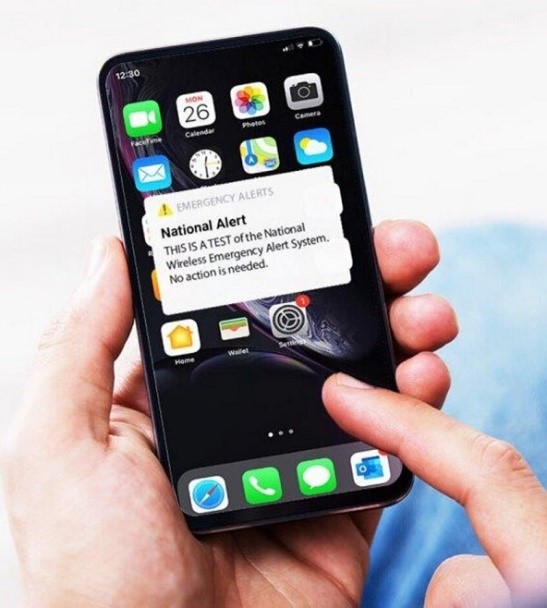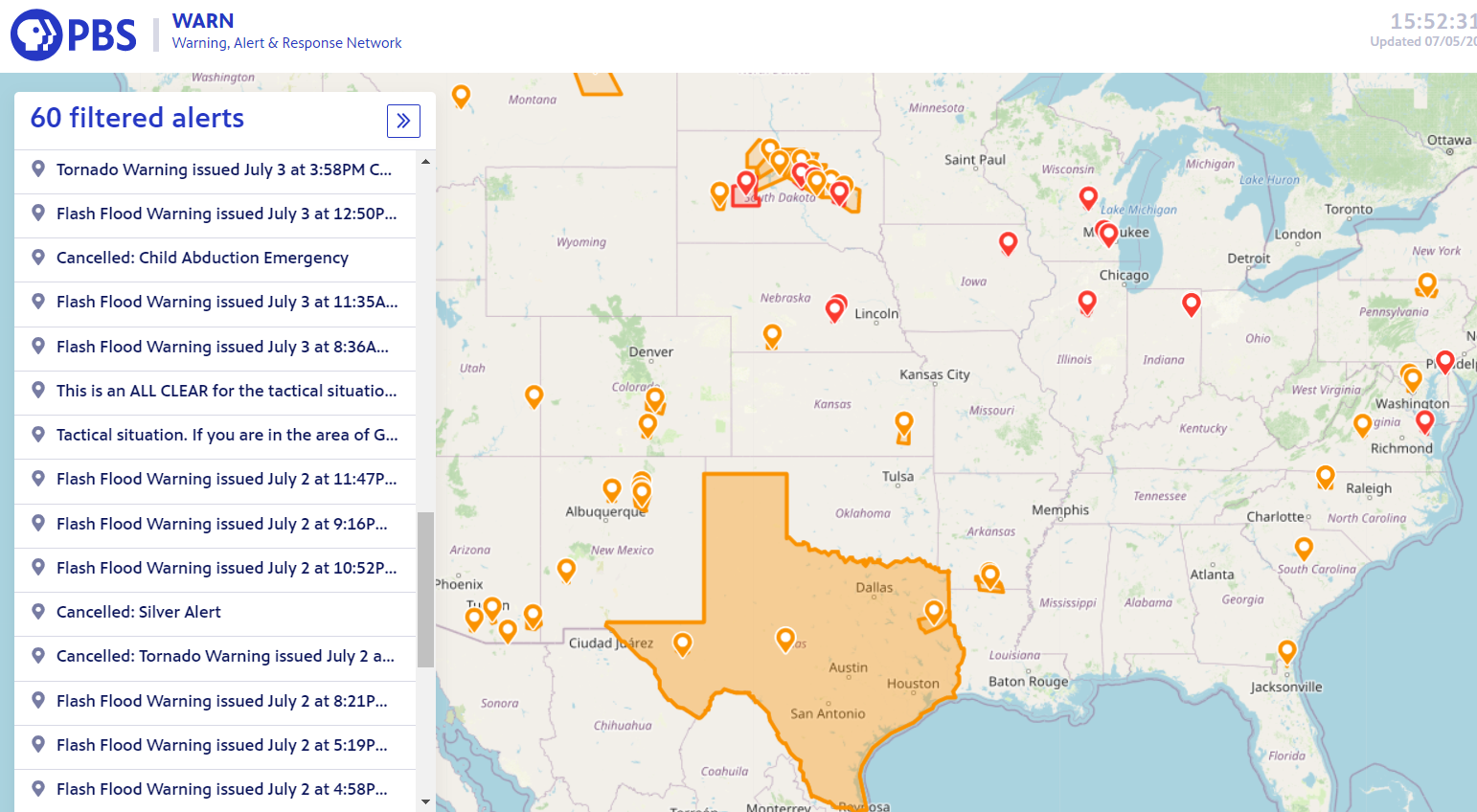The public is the foundation of all partner groups and the primary reason FEMA works to create an effective, reliable, integrated, flexible and comprehensive public alert and warning system.
It's important that all segments of the population understand the functions of the Integrated Public Alert & Warning System (IPAWS) and how to appropriately respond to alerts and warnings from public safety officials.

Myths and Facts
IPAWS is FEMA's national system for local alerting that provides authenticated emergency and life-saving information to the public through WEA, EAS and NOAA Weather Radio. However, misperceptions and myths about IPAWS routinely find their way onto social media and even major news networks.
Review the Myths and Facts
Where You Receive Alerts
Radio, Television and Cable
Learn about the Emergency Alert System, which sends alerts via radio, TV, and cable.
Emergency Alert System
NOAA Weather Radio
Learn about the alerts delivered through NOAA Weather Radio.
Mobile Phones
Learn about the Wireless Emergency Alerts you receive on your mobile phone.
Wireless Emergency Alerts
Internet-Based Services
Learn about internet-based services and unique alerting systems.
What To Do When You Receive Alerts
FEMA’s Individual and Community Preparedness Division (ICPD) supports the FEMA Mission by connecting individuals, organizations, and communities with research and tools to build and sustain capabilities to prepare for any disaster or emergency.
ICPD's A Guide for Alerts and Warnings (ready.gov) has information about 17 hazards, their alerts, and the protective actions you can take to stay safe.
How Alerts Are Transmitted
IPAWS allows alerting authorities to write their own messages using open standards. The message is then authenticated by the IPAWS Open Platform for Emergency Networks (IPAWS-OPEN) to be delivered simultaneously through multiple pathways.
Learn About IPAWS-OPEN
Types of Wireless Emergency Alerts
National Alerts are a special class of alerts only sent during a national emergency.
Imminent Threat Alerts include natural or human-made disasters, extreme weather, active shooters, and other threatening emergencies that are current or emerging.
Public Safety Alerts contain information about a threat that may not be imminent or after an imminent threat has occurred. Public safety alerts are less severe than imminent threat alerts.
America's Missing: Broadcast Emergency Response (AMBER) Alerts are urgent bulletins issued in child-abduction cases. Rapid and effective public alerts often play a crucial role in returning a missing child safely. An AMBER Alert instantly enables the entire community to assist in the search for and safe recovery of the child. Law enforcement assembles descriptions and pictures of the missing child, the suspected abductor and any other helpful information.
Test Messages assess the capability of state, local, tribal and territorial officials to send their WEAs. The message will state that this is a TEST.

PBS WARN (Warning, Alert, Response Network) provides a backup dissemination method of Wireless Emergency Alerts (WEAs) should IPAWS connection to wireless providers ever be interrupted. All WEAs sent via IPAWS are received and displayed by the PBS WARN website. The map shows all active WEAs that WARN is broadcasting in real time. EAS is not displayed.
View the Map
AMBER Alerts
Rapid and effective public alerts often play a crucial role in returning that child to safety. For this reason, the IPAWS Office has partnered with the Department of Justice and the National Center for Missing and Exploited Children to ensure that life-saving AMBER Alerts can be disseminated to as many people as possible.
The AMBER Alert Program is a voluntary partnership between law enforcement agencies, broadcasters, and transportation agencies to activate an urgent bulletin in the most serious child-abduction cases. The goal of an AMBER Alert is to instantly enable the entire community to assist in the search for and safe recovery of the child.
When law enforcement has been notified about an abducted child, they determine whether the case meets their AMBER Alert program’s criteria. If it does, alert information is assembled, including descriptions and pictures of the missing child, the suspected abductor, and suspected vehicle along with any other information available and valuable to identifying the child and suspect.
Historically, this information has been disseminated through the Emergency Alert System (EAS), which leverages the communication support of radio, television, cable, and satellite providers (EAS participants) and NOAA Weather Radio. In addition, AMBER Alerts may now also be disseminated via Wireless Emergency Alerts (WEA). Localities may also use digital signage or other alerting technologies if they are available.
IPAWS and Ready.gov
The IPAWS Office, in partnership with Ready.gov, has created public education products that are designed to help the American public understand the functions of the public alert and warning system; prepare for emergencies; and how to access, use and respond to information from public safety officials.
Public Service Announcements for television and radio, in English and Spanish, were created to draw the public’s attention to WEAs and how they are an important, lifesaving tool. The PSAs are intended to educate the public on what WEA is, how to recognize when a message is received, to heed the warning, and take the prescribed protective action in the message. They also direct viewers to learn more about life-saving alerts at Ready.gov/alerts.
The Ready.gov/kids webpage provides information about WEAs and other age appropriate guidance. The IPAWS Office created a WEA Fact Sheet and Word Search for Kids with accompanying instructional materials for parents, teachers and other educators.
The IPAWS Mailing Lists
The IPAWS Office mails guidance bulletins (Tips and Fact Sheets), event invitations and recordings, newsletters and IPAWS system announcements to meet the information needs of our diverse family of stakeholders: public officials, emergency managers, technology providers and interested members of the public.
These mailings are for the purpose of training and administration. They are not sources of public alerts disseminated by IPAWS. Only the IPAWS Office can add subscribers to the lists.
Our E-mail lists include:
IPAWS Users: This list is exclusively for Alerting Authorities that have entered into Memoranda of Agreement (MOA) with FEMA. We add the authority's official contacts to this list when they complete the MOA process. Alerting Authorities must keep IPAWS Customer Support advised of any changes to their contact records.
IPAWS Vendors: This list is for suppliers of IPAWS-compatible alerting software; manufacturers of mobile devices, Emergency Alert System (EAS) and NOAA Weather Radio equipment; communications carriers and vendors of IPAWS network products, and alert redistributors authorized to access the IPAWS All-Hazards Information Feed. Subscription to this list requires a signed Developer/Vendor MOA.
General Interest: This list is for interested persons and emergency managers not otherwise listed on MOA documents as principal points of contact.
EAS Feed Notifications: This list is mainly of interest to broadcast engineers. It mails a monthly spreadsheet of routine EAS testing data. No other content is included.
Requests to subscribe to the General Interest and/or EAS Feed Notifications lists can be directed to IPAWS.
Please identify yourself and your affiliation in your request. Announcements sent to the lists will contain an unsubscribe link if you no longer wish to receive the mailings.


